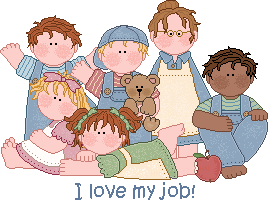Writing Lesson Plan - Fictional Narrative
How difficult is it to create a picture with words? Turns out, very. The 6th graders in my class struggled as they attempted to compose a fictional story. One of the main obstacles they faced was word choice including the use of vivid and striking vocabulary to paint an image for their readers.
Before we get any further with the writing process, I needed the students to see the importance of word choice. As a story writer, each student only has the words to rely on in conveying the intended message. Feelings, mood, setting, surroundings, etc. Everything is delivered to the readers via words. Therefore, the class proceeded with the following activity.
Fictional Narrative: Creating Imagery
Goals: Students will learn to write a fictional narrative story, including all the necessary techniques that make a story lively and interesting. They will learn the difficulty of the activity. |
Specific Instructional Objectives: Students will be able to create vivid images with words in writing so that readers can visualize exactly the picture the writer hoped to have painted. Each student will practice on descriptive word usage, which will help them paint a picture in their readers’ minds. |
Content: imagery, word choice |
Materials: sample writing, Lord of the Flies book, vivid and dull images, identical pictures – colored and grayscale. |
Procedures: |
Opening · Show a black and white image, and ask students to describe it. The teacher takes notes. · Next, show an identical picture in color, and ask students to describe it. The teacher takes notes. · Compare the two sets of notes, discuss the difference. Ask students: Was it harder or easier to describe the color picture? For which picture were you able to use more descriptive words? |
During Lesson 1. Activity: put students into pairs, one is the describer and one is the drawer. Give each describer a picture with a vivid image, and keep it from the drawer. The describer describes the image to the drawer, and the drawer draws. At the end of the activity, bring group back together. 2. Compare the final product with the image and ask students make comments – Do the pictures match exactly? What part of the pictures was especially difficult to describe? What words did you use to describe the images? When the drawer did not understand a description, what was the general problem? 3. Teacher reads aloud the sample writing from a student in the previous year. Note that the writing assignments are not exactly the same, but the genre and expectations are. 4. Ask students to pay attention to: word choices that stand out and use of imagery. Write down specific examples. |
Closing · Clarify some important points: create imagery, the reader should be able to see what the writer is thinking, word choices are important. |
Assessment discussion on “creating images” |
Learner Factors – Differentiation, Modifications, and Accommodations: · Make up a chart ahead of time. 2 columns – advantages and disadvantages for B&W and color pictures. Have an example already written on it. · Demonstrate the activity. Have a student describe a picture to the teacher, and teacher tries to re-create the picture relying on the student’s description. · Make an adjective word bank. · Have copies of the sample writing for students to follow along while the teacher reads it. |
Classroom Environment and Management Conditions: · Students are paired with someone they work well with. · Have students spread out and also speak softly during the activity to avoid disrupting others. · Ask students to take notes. |



